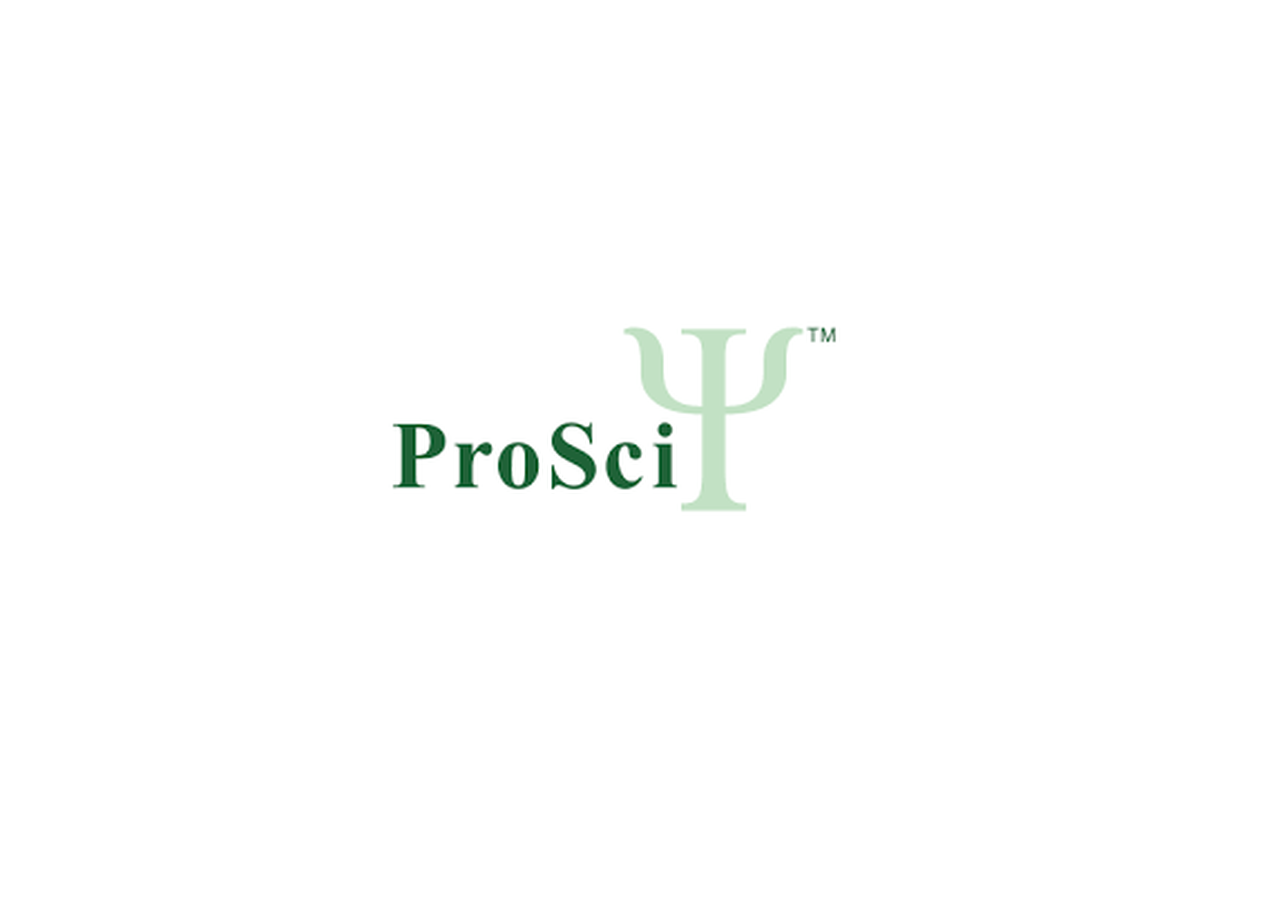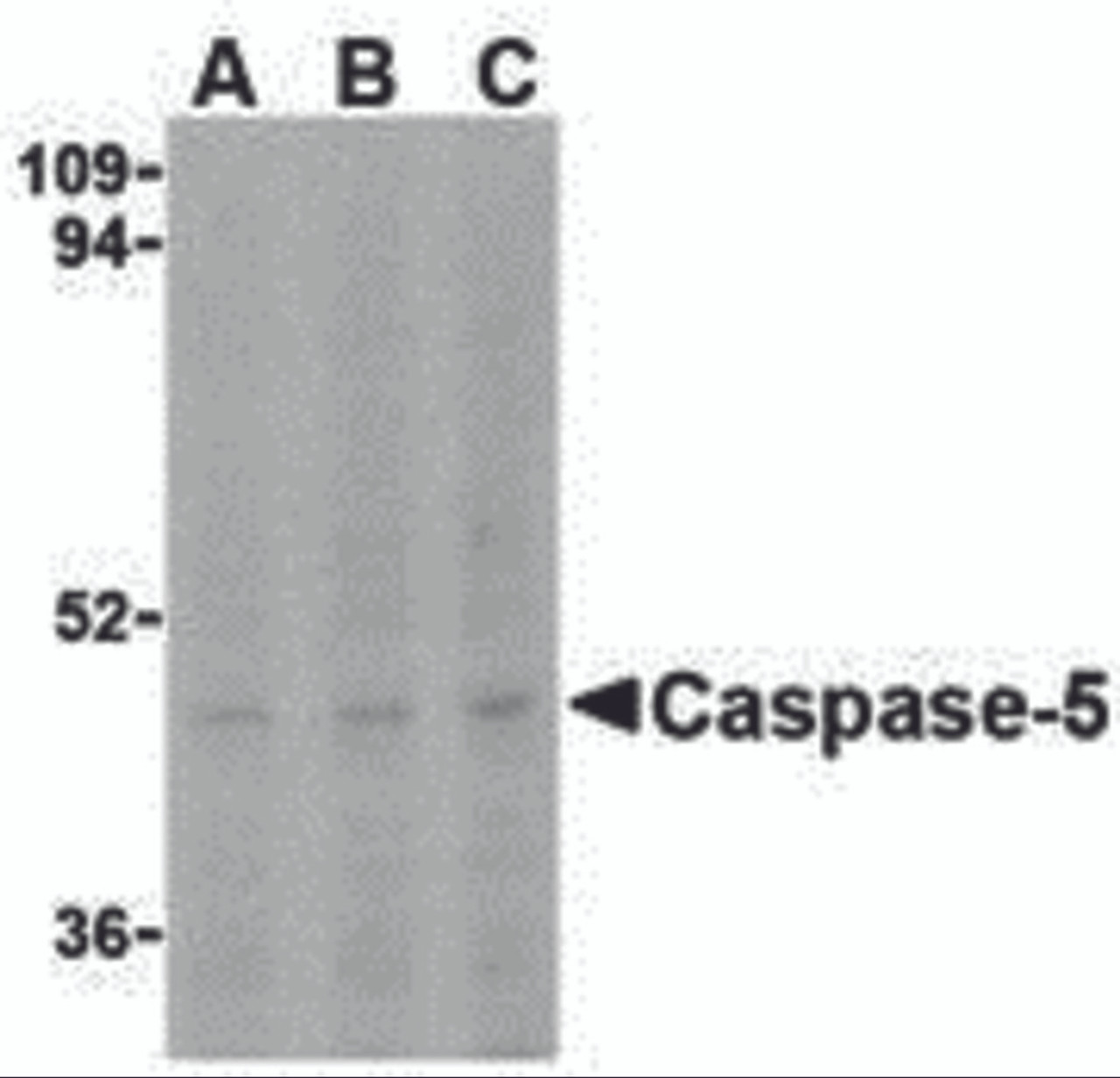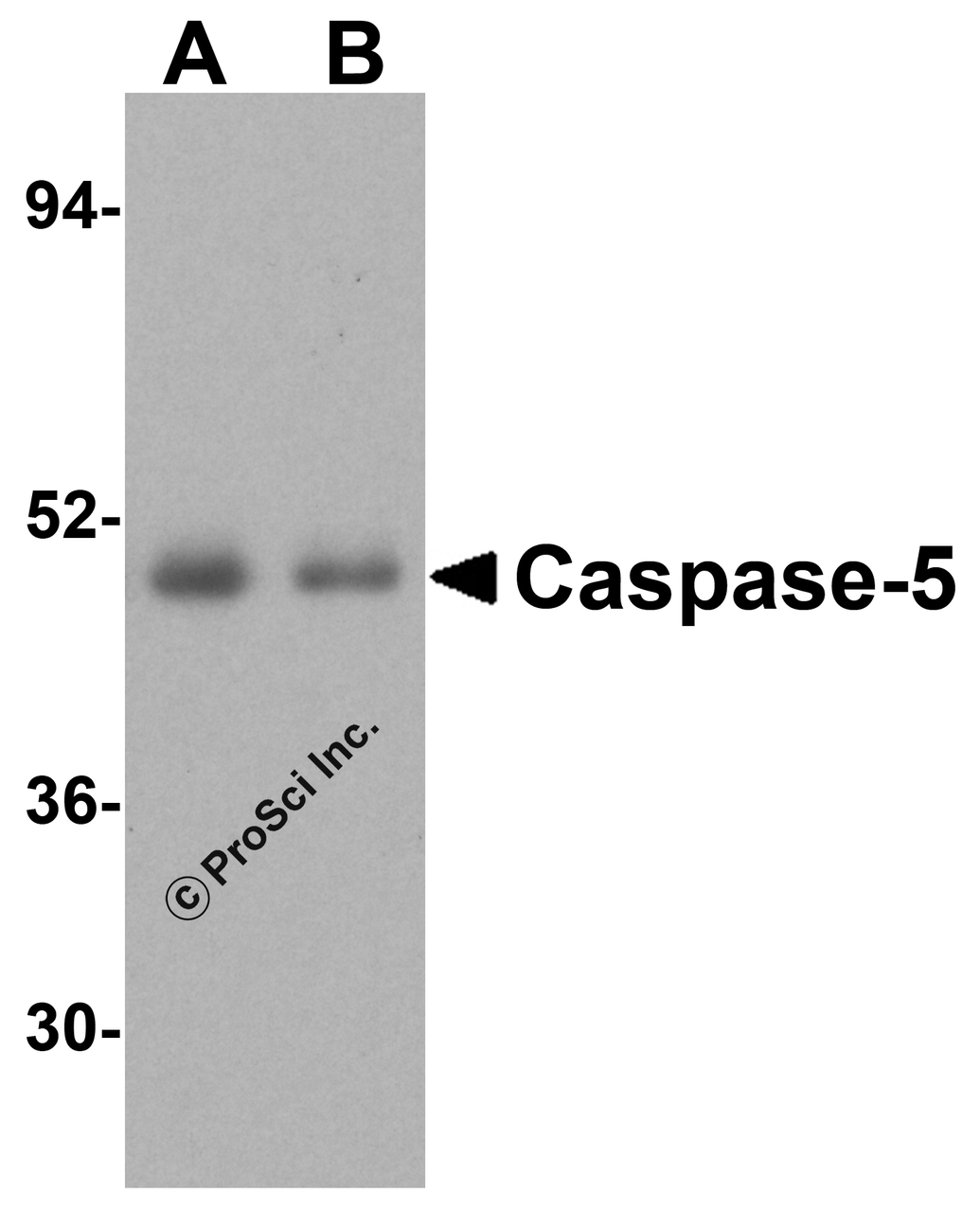Product Description
Caspase-5 Antibody | 3455 | ProSci
Host: Rabbit
Reactivity: Human
Homology: N/A
Immunogen: Caspase-5 antibody was raised against a 16 amino acid synthetic peptide from the amino-terminus of human Caspase-5.
The immunogen is located within amino acids 40 - 90 of Caspase-5.
Research Area: Apoptosis
Tested Application: E, WB
Application: Casp-5 antibody can be used for the detection of Caspase-5 by Western blot at 0.5 to 2 μg/mL.
Antibody validated: Western Blot in human samples. All other applications and species not yet tested.
Specificiy: Depending on cell lines or tissues used, other cleavage products may be observed.
Positive Control 1: Cat. No. 1225 - Ramos Cell Lysate
Positive Control 2: Cat. No. 1314 - Human Thymus Tissue Lysate
Positive Control 3: Cat. No. 1306 - Human Spleen Tissue Lysate
Positive Control 4: N/A
Positive Control 5: N/A
Positive Control 6: N/A
Molecular Weight: Predicted: 48 kDa
Observed: 48 kDa
Validation: N/A
Isoform: N/A
Purification: Caspase-5 Antibody is affinity chromatography purified via peptide column.
Clonality: Polyclonal
Clone: N/A
Isotype: IgG
Conjugate: Unconjugated
Physical State: Liquid
Buffer: Caspase-5 Antibody is supplied in PBS containing 0.02% sodium azide.
Concentration: 1 mg/mL
Storage Condition: Caspase-5 antibody can be stored at 4˚C for three months and -20˚C, stable for up to one year. As with all antibodies care should be taken to avoid repeated freeze thaw cycles. Antibodies should not be exposed to prolonged high temperatures.
Alternate Name: Caspase-5 Antibody: ICH-3, ICEREL-III, ICE (rel) III, ICH3, Caspase-5, Protease ICH-3, CASP-5
User Note: Optimal dilutions for each application to be determined by the researcher.
BACKGROUND: Caspase-5 Antibody: Caspases are a family of cysteine proteases that can be divided into the apoptotic and inflammatory caspase subfamilies. Unlike the apoptotic caspases, members of the inflammatory subfamily are generally not involved in cell death but are associated with the immune response to microbial pathogens. Members of this subfamily include caspase-1, -4, -5, and -12. Activation of these caspases results in the cleavage and activation of proinflammatory cytokines such as IL-1β and IL-18. Caspase-5 can interact with caspase-1; both are constituents of the NALP1 inflammasome, a complex that can trigger the cleavage of pro-IL-1β. Expression of caspase-5 can be regulated by lipopolysaccharide (LPS) and IFN-gamma.
 Euro
Euro
 USD
USD
 British Pound
British Pound
 NULL
NULL












